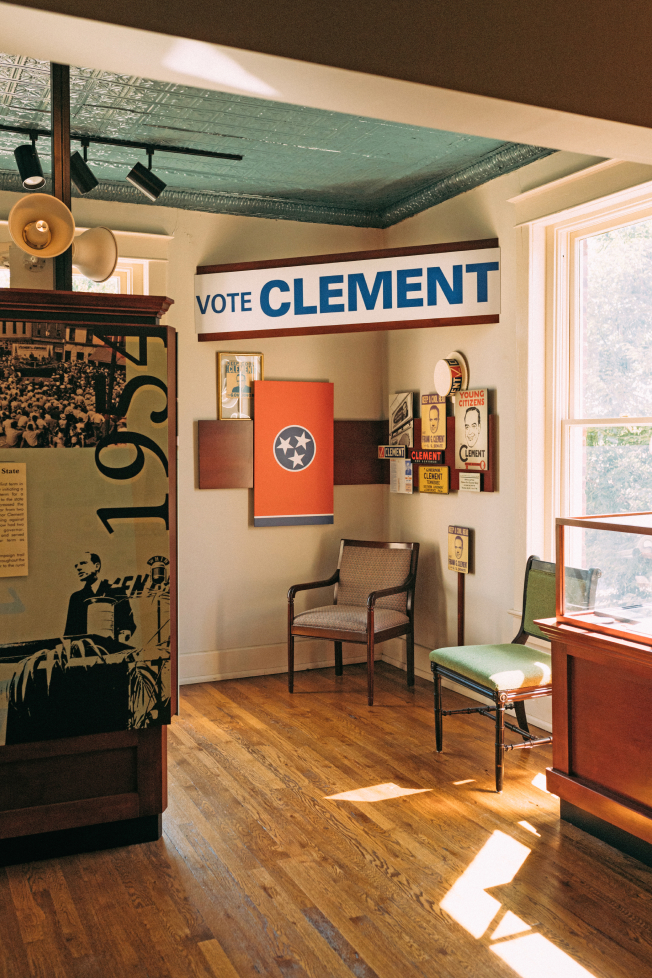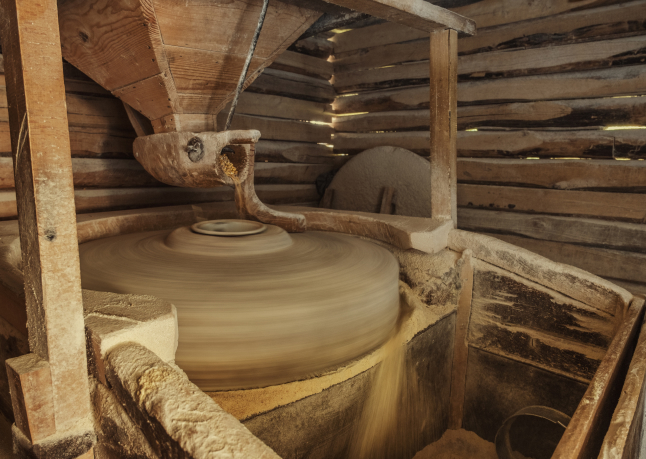Dickson County, Tennessee's rich history includes industry in the iron furnaces of Cumberland Furnace, railroad history, African American heritage, and more.
Cumberland Furnace Historic District
Dickson County became a manufacturing center from its frontier beginnings, nowhere more emblematic than the historic village of Cumberland Furnace, site of the first ironworks in the Middle Tennessee region. The village of Cumberland Furnace is the oldest community south of the Cumberland River between Nashville and Clarksville. The iron furnaces shut down in the 1940s. In 1988, Cumberland Furnace, with its 30+ buildings and sites associated with the iron industry, was listed as a historic district on the National Register of Historic Places. The Cumberland Iron Works Museum, a double pen log structure build around 1850, formerly known as the Grimes House, is a stop on the Tennessee Iron Furnace Trail on the Western Highland Rim.
When you’re in Cumberland Furnace, don’t miss seeing the Drouillard House, built sometime between 1868 and 1870, a three-story Victorian Italianate-style mansion built as a summer house by Nashville socialite Florence Kirkman and her husband, Union Army Captain James Pierre Drouillard. The house was designed after one that Florence Kirkman had seen in Newport, Rhode Island, an East Coast resort town where she spent summers as a young woman.
Clement Railroad Hotel & Museum
A Tennessee state historic site, the Clement Railroad Hotel and Museum is one of the few remaining examples of a railroad hotel in a small Tennessee town. Built in 1913 in historic downtown Dickson, the hotel, then named The Hotel Halbrook, today features permanent exhibits and programming involving the Civil War, railroading, the Civil Rights Movement, and local and regional history. The hotel was operated as a working man’s hotel by Tennessee Governor Frank G. Clement’s family until 1954.
Promise Land Community
Promise Land was established and settled by African Americans shortly after emancipation from slavery, during the Reconstruction Period (1870-1875). Many of the earlier residents were former slaves who worked at the nearby Cumberland Furnace. The Furnace continued to serve as a source of employment for many of the residents after emancipation.
The community thrived from about 1870 to 1920. After World War I, many young men and women began to move north searching for better working conditions and opportunities. In 1957, the Promise Land School closed due to lack of students. Once encompassing 1,000 acres and more than 50 homes, stores, three churches and an elementary school, today only the St. John Promise Land Church and the old Promise Land School Building remain. The Promise Land School was listed on the National Register of Historic Places in 2007 and work is currently underway to restore the school as a one-room schoolhouse museum. It currently houses many displays of memorabilia and photographs interpreting the Promise Land Community and life in this African American community. In 2010, a Civil War Trails Marker was placed on the site of the historic school building.
Birthplace of the Cumberland Presbyterian Church
The site of the first Cumberland Presbyterian Church is in Montgomery Bell State Park. The church was founded in 1810 in the log cabin home of Reverend Samuel McAdow in an ideological split with the Presbyterian Church. A replica of the cabin and a church are within the park.

Lonesome Historic Site
This Pioneer Park is anchored by the oldest dwelling
in South Dickson County, historic Lonesome cabin, built in 1821 and listed on the National Register of Historic Places. The cabin is still cherished by the Austin Family and the community. The Austin-Alspaugh family cemetery is also on the property. There are about 40 graves, including the graves of several slaves. Many of the graves have no marker at all or
are marked with stones.
Dickson County Historic Courthouse
When the Tennessee General Assembly created the Town of Charlotte as the seat of Dickson County’s government in 1804, legislators mandated that two acres be set aside for a public square and also directed that courthouse, prison and stocks be
erected on the site. As the county prospered, the first log courthouse was demolished to make way for a two-story brick edifice, which itself had to be rebuilt after a tornado in 1830. Eventually, a two-story courthouse annex was built nearby in 1977 to
relieve overcrowding. However, the Historic Courthouse remains the oldest courthouse still
in use in Tennessee.
Old Spencer Mill
In the hills of Burns, Tennessee, the Old Spencer Mill
is one of the only "1800s"-type gristmills in Tennessee with two sets of French burr stones and original equipment, all powered by a 20' tall Fitz waterwheel. The site also features a general store, post office, a
tee pee, cabins, creekside fun, peacocks, and much more. Old Spencer Mill's historic site offers living history tours by appointment, and continues to
grind cornmeal.
